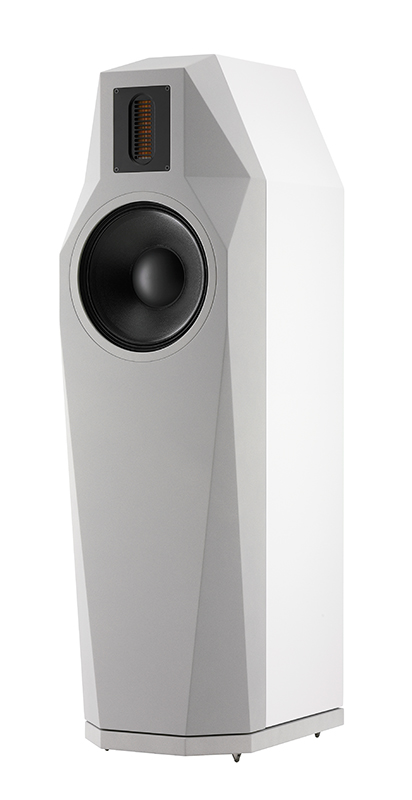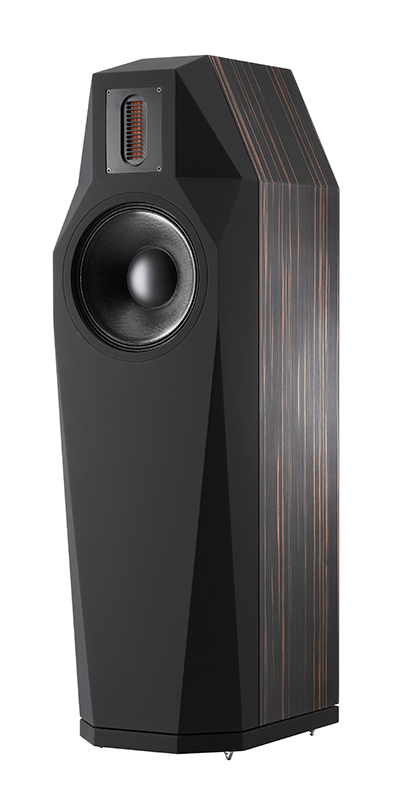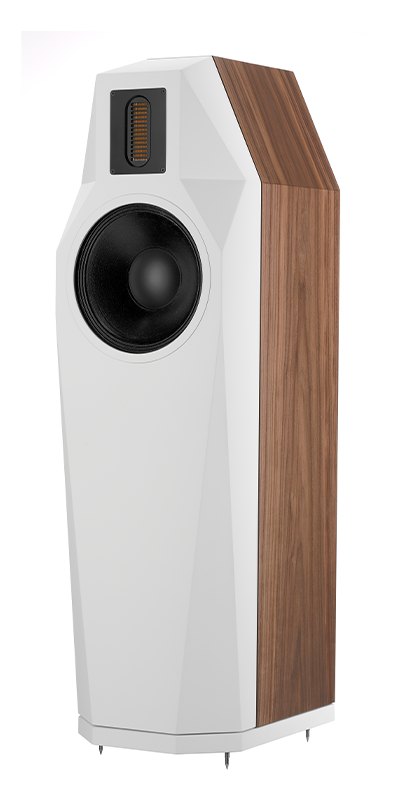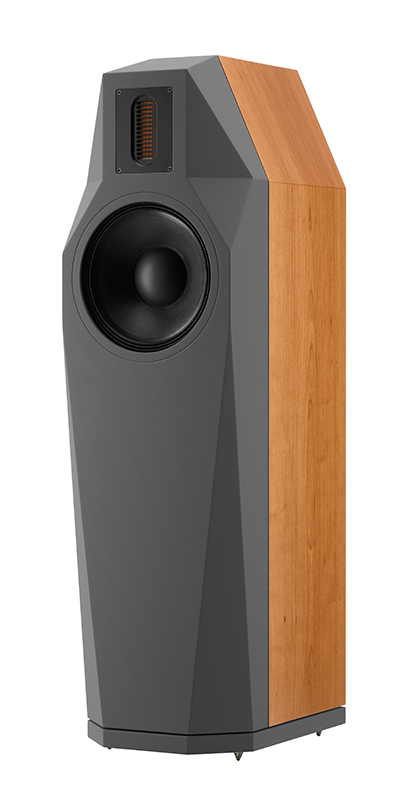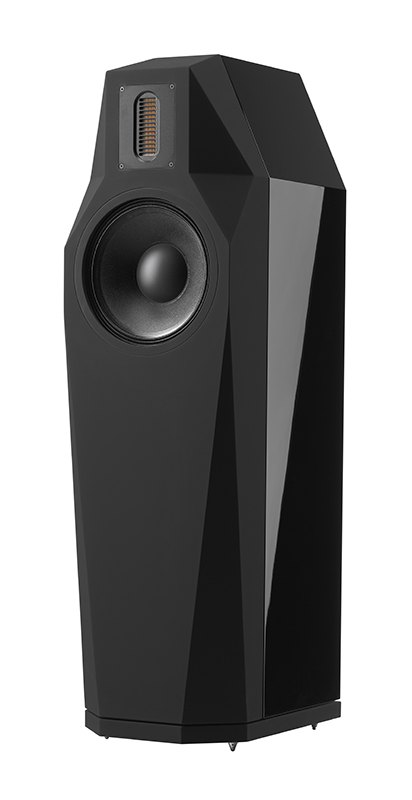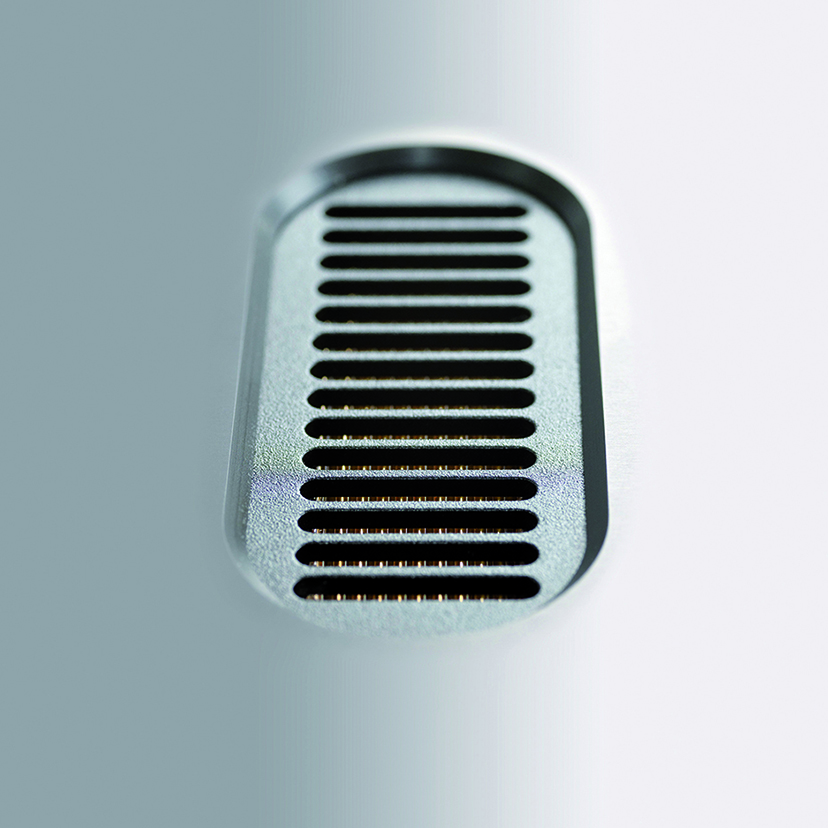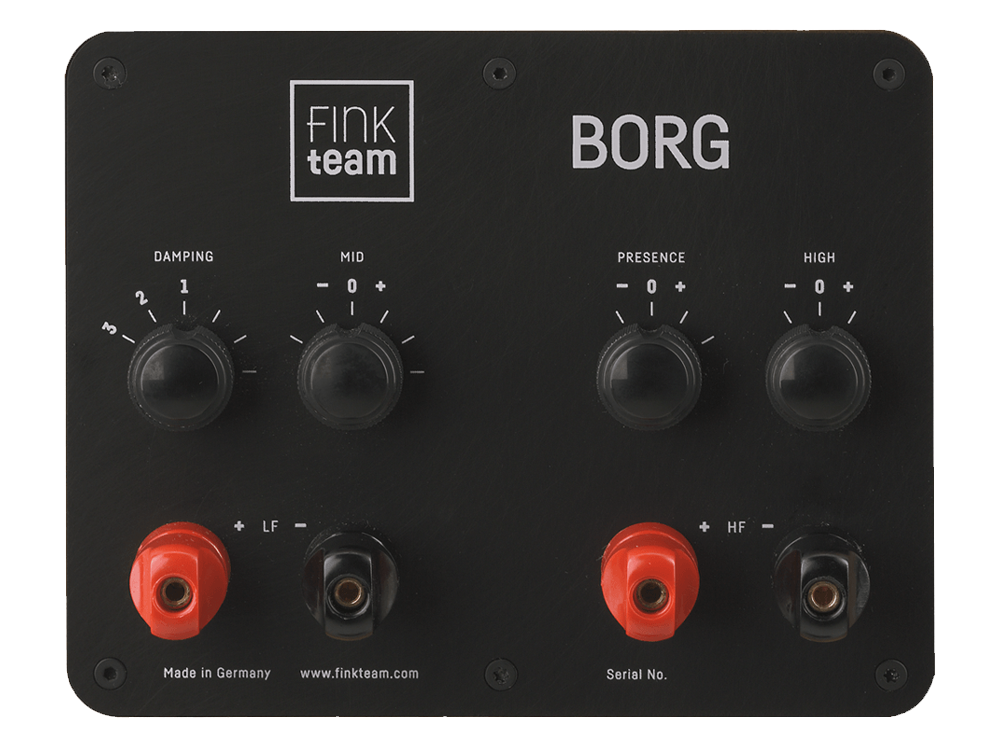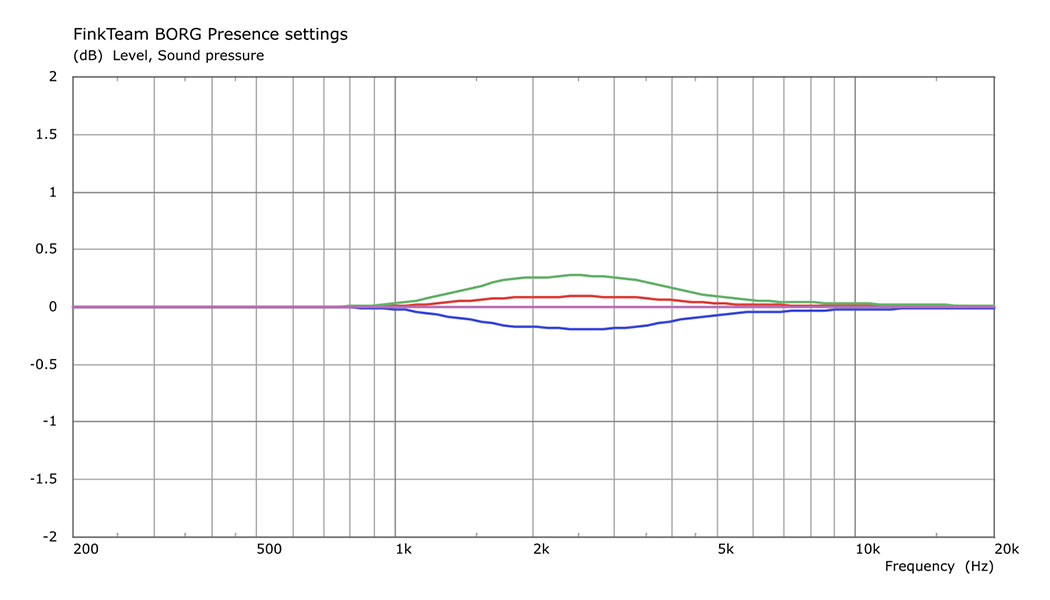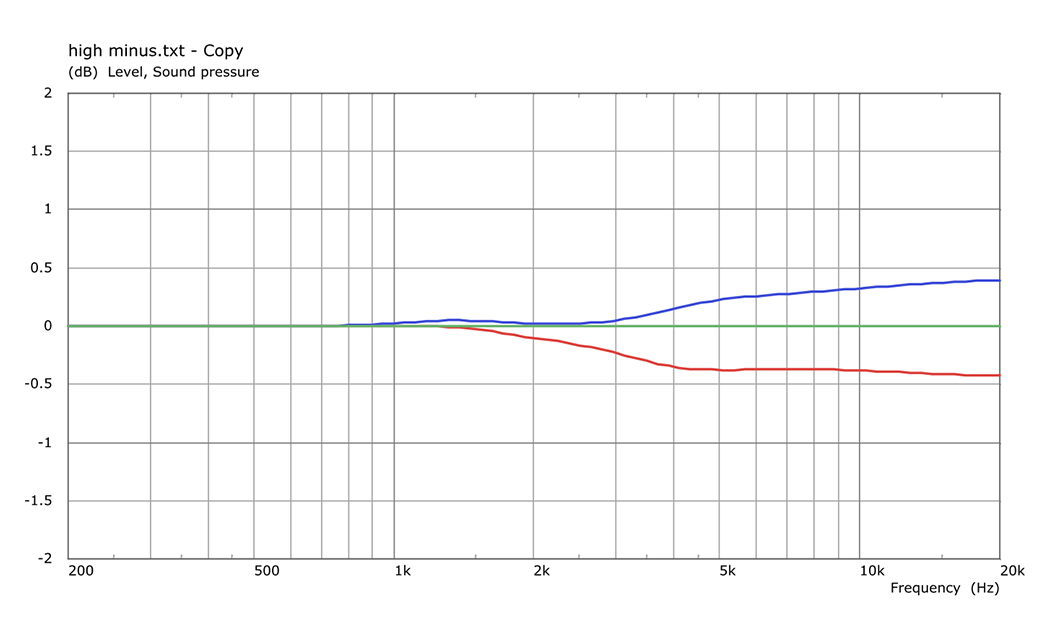FinkTeam’s Borg is two-way floor standing design featuring a 10.25 inch high-power mid/bass driver and an Air Motion Transformer (AMT) tweeter.
HiFi Pig Magazine UK:
“Throw what you like at these speakers and they act with nothing but the utmost coolness and unflappability, even when they are pushed very hard with and difficult material. Everything is there from the tight, textured and controlled bass, through the gorgeous mid-band and up into the wonderfully airy and detailed higher registers.“
Hi-Fidelity Germany:
“Anyone who embarks on a musical journey with the FinkTeam Borg knowingly runs the risk of never wanting to return. It’s absolutely mesmerising to hear how these speakers fully adapt to each genre.”
Here’s a list of the Borg reviews.
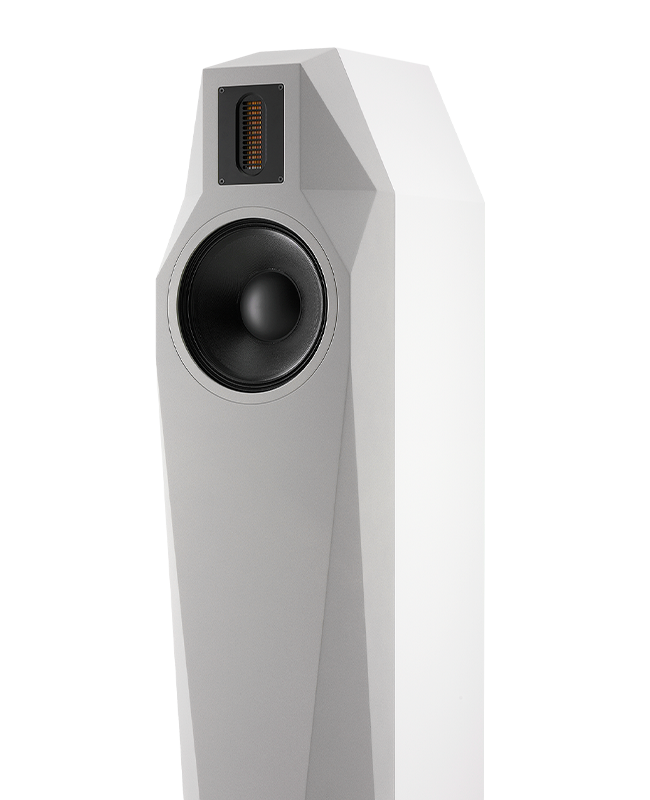
TECHNOLOGIES
- Specifications
- Concept
- Colours
- Cabinet
- Crossover and Impedance
- Distortion
- Mid/Bass Driver
- AMT HF Unit
- Spikes / Domes
- Fine Tuning
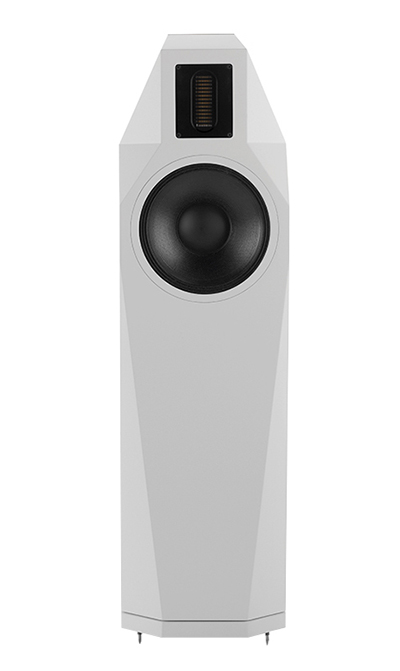
Frequency Response:
41Hz – 30kHz, − 6dB / 32Hz – 35kHz – -10dB
Average Impedance:
10 Ohm
Minimum Impedance:
6.5 Ohm at 20kHz
Sensitivity:
87dB SPL at 1m for 2.83Vrms input
Distortion:
<0.2% THD at 87dB SPL
Crossover Frequency:
1600Hz
Bass Unit:
High Power 10.25-inch with 3″ Voice coil
HF Unit:
6464mm2 AMT (Mundorf)
Terminals:
High Current Connectors for 4mm plugs or spades
Dimensions:
1050 x 300 x 400mm (HWD)
Weight:
52kg each
Finish:
Choice of standard finishes or any finish to special order

FinkTeam’s Borg is two-way floor standing design featuring a 10.25 inch high-power mid/bass driver and an Air Motion Transformer (AMT) tweeter.
Borg is a significant design exercise as knitting a 10.25 inch mid/bass, albeit an extremely fine one, with a HF unit is never easy. To combine the two drivers to achieve a flat frequency response and, more importantly, a slow even mid/HF roll off in the power response is a significant feat of engineering. There is no off-axis hole in the middle effect.
Borg is designed as a more domestic friendly loudspeaker than the WM-4. Borg’s low frequency tuning is designed to deliver weight and drama to music but without making it a total diva when it comes to room positioning.
Of course, it isn’t as good overall as the WM-4 but then neither does it demand a huge room and the finest amplifier and sources. Believe us when we say that Borg will rise to the challenge of the finest electronics, but they are not essential to enjoy Borg’s talents.
Borg is available in a selection of finishes/colours. The rear of the cabinets are real wood veneer, except the white black colours. Borg fronts are finished in Nextel.
Standard Finishes:
Amarra Ebony with Black front | American Walnut with White front | White 9003 Matt with Steel Grey front | Black Matt with Black front.
Non Standard Finishes:
American Walnut with Black Fron | American Black Cherry with Stone Grey front | Savannah with Black front
Premium Finish:
High Gloss Piano Black with Matt Black Front

Typical loudspeaker cabinets have pronounced structural resonances which are very audible and reduce the speaker’s ’signal-to-noise ratio‘. At FinkTeam, we take this aspect of loudspeaker performance very seriously because we know that a quiet cabinet allows the reproduction of low-level detail in a recording that is otherwise swamped by spurious cabinet output. Listener fatigue is avoided by reducing colouration and time smear. Stereo image focus is improved.
The design emphasis is on panel damping. It is impossible to force all the panel bending resonances above the passband, so instead, they are damped to reduce their amplitude to below audibility. This damping is achieved using a multilayer construction that combines multi-thickness MDF panels with a damping layer whose internal friction converts vibration into heat. FinkTeam developed algorithms help specify ideal material thicknesses to achieve the best results, but the ultimate determination is made by subjective assessment.
Enthusiasts spend thousands buying quieter equipment – products that seem to generate (or not in fact) more space between notes to have the effect considerably reduced by noisy loudspeaker cabinets. FinkTeam’s COMSOL modelling and Laser Scanning allow prediction and measurement of the results of cabinet designs.
An example of this was the cabinet opening to mount the 10.25 inch mid/bass driver. Even with the drivers rigidly mounted, there was some unwanted vibration. Almost invisible to the touch test, it was obvious under the laser scanner. A solid metal ring behind the driver mounting solved the problem and increased the signal to noise ratio.
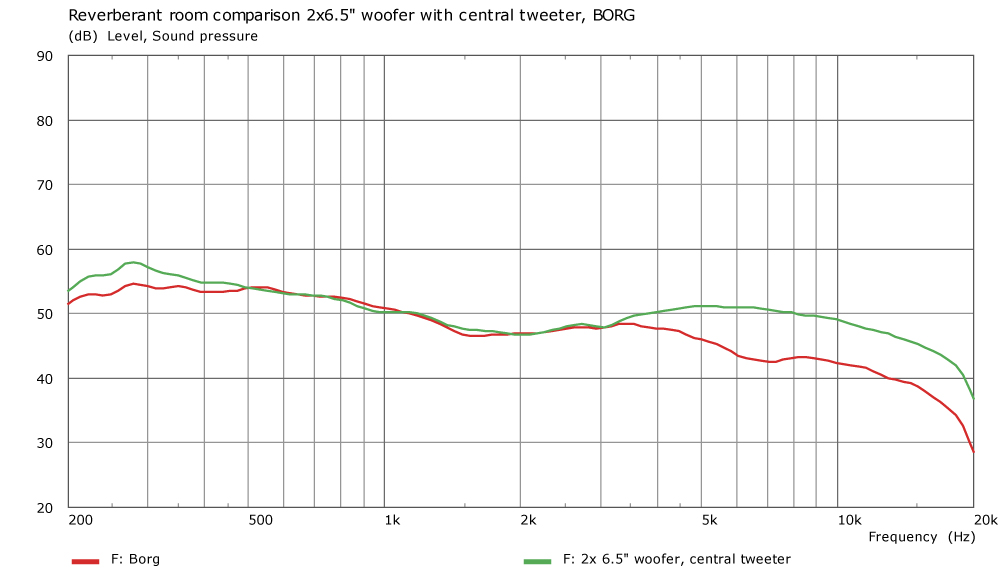
As can be seen from the power response curve, the drive to the room is totally even, reducing slowly with frequency. Comparing this with a classic modern 2-way which shows some of the uneven room drive. The crossover is 4th order acoustic Linkwitz-Riley with a time delay addition between LF and HF.

At the same time the impedance of Borg has not been compromised to gain false sensitivity. At 87dB at 1m for 2.83V and with relatively gentle phase angles, it is an easy load for an amplifier.
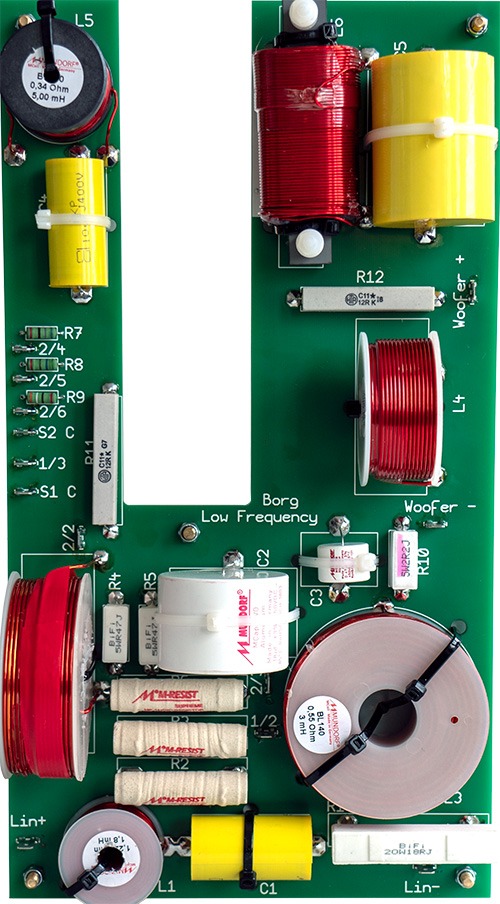
Borg LF Crossover

Borg HF Crossover

Besides linearity and signal-to-noise the other key parameter the FinkTeam fight for is low distortion.
Low distortion just makes it easier to listen for longer and for instruments to sound more natural. Compare brass instruments live to that reproduced by the average hi-fi system and to a system with low distortion and it’s clear that low distortion is far more natural.
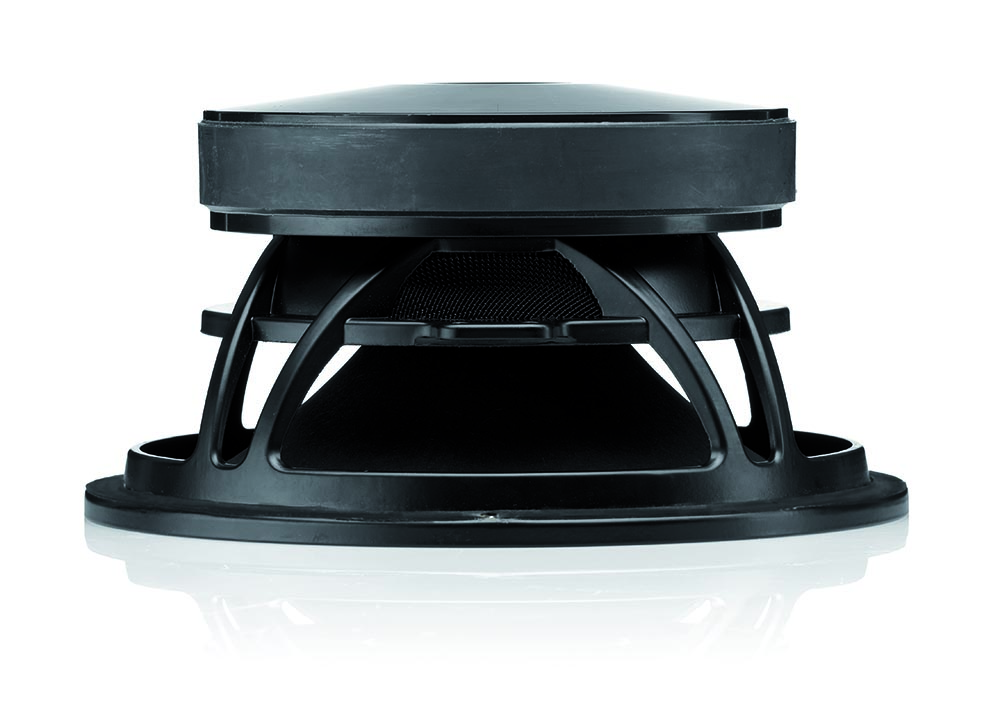
The die-cast aluminium chassis is fully vented for low airspeed, as is the voice coil former. Both reduce distortion and compression.
All this brings a dynamic low-colouration drive unit with high power handling and very low thermal compression.
As one would expect, Borg’s mid-bass driver is custom designed and manufactured precisely for the purpose.
10.25 inch mid/bass units are relatively unusual. Crossing them well to HF units is not trivial. Still, FinkTeam is a remarkable company: a significant technical challenge is just a design exercise that may take a little longer to solve.
The benefits of a 10.25 inch mid/bass once heard are difficult to forget. A level of dynamics and naturalness around voices that is unusual and a richness to the sound without bloom or boom (in a well-designed system) that just sounds right. Smaller two-way systems sound anaemic after hearing a 10 inch.
The Borg’s mid/bass unit features similar thinking to the WM-4’s bass driver: low hysteresis surround (it too looks like a pro driver), a sizeable three-inch voice coil for better control and power handling and a low mass stiff paper cone.
Of course, it includes all the regular FinkTeam design essentials: an aluminium shorting ring on the centre pole to reduce voice coil inductance change with position and to reduce flux variation as a function of voice coil current.
The tweeter is an Air Motion Transformer (AMT) operating according to the principles established by its inventor Oskar Heil.
Developed by Mundorf together with FinkTeam and manufactured specifically for FinkTeam by Mundorf, the AMT has a strong 25um-thick pleated Kapton diaphragm with 50um aluminium strips.
This material has extremely good internal damping, resulting in particularly low distortion. A special etching process was developed to produce it and the diaphragm configuration optimized through a large number of tests.
Given the 10.25 inch mid/bass unit and a lower than average crossover frequency of 1600Hz, a larger AMT driver with a 6464mm2 surface area was ideal. Frequency response easily reaches up to 30kHz while distortion is very low and mainly second harmonic. The AMTs almost constant impedance also facilitates simplified crossover design.

Designed by us and machined from Austenitic 304 non-magnetic stainless steel. Chosen to be the optimum combination of durability, precision machinability and high resistance to the environment, we are hugely pleased with the performance of these spikes/domes.
They are supplied with a suitable spanner for tightening the locknut.
At present the only way to get a set of these is to buy a pair of Borg or WM-4 but we are considering if we will make these available via our website later this year.
Even the best loudspeaker design needs some help in a difficult room.
FinkTeam understand that we can’t all have totally treated listening rooms with ideal reverberation times and controlled bass.
To help with this there are controls on the rear of Borg allowing some subtle settings of response.
Damping
Allows a degree of adaptation to suit different amplifier damping factors.
1. Standard setting for transistor amplifiers with good damping factor
2. To be used with amplifiers having lower damping factor, many vintage amplifiers and also in rooms with low frequency problems
3. To be used with tube amplifiers
It is possible to use 1 and 2 for all transistor amplifiers, but 3 should be only used for tube amplifiers.
Mid
With the mid position, the position of the virtual stage can be changed from back behind the speakers to closer to the listener. It can also compensate for more or less lively rooms. A very lively room would need a minus setting, a damped room a plus setting. Even though the changes are only around +- 0.5db, they are made over a wide area and so allow good control over this significant band.

